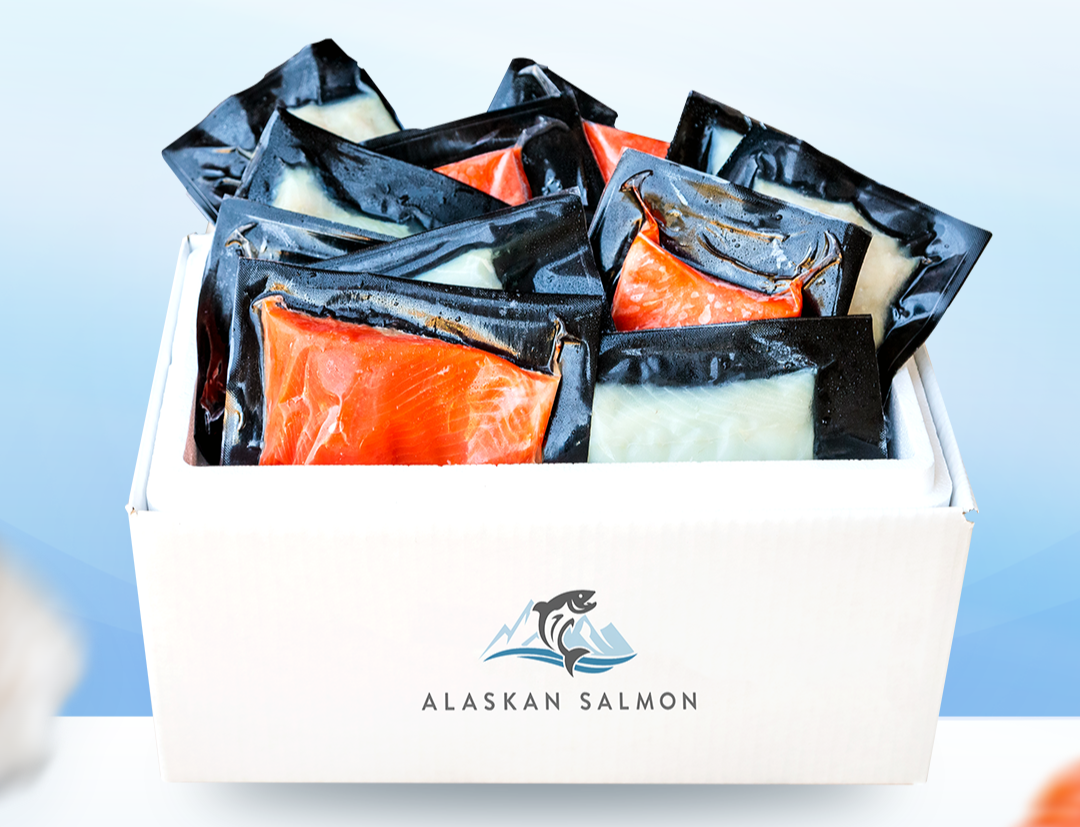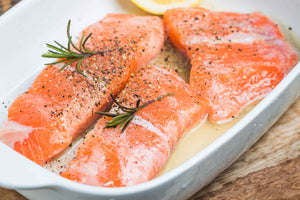How to Microwave Salmon the Right Way
Updated on Nov 10, 2025
There are many ways to cook salmon. You can bake it, grill it, or pan-sear it. But if you’ve got a microwave, you might be wondering if it can do the job too. The answer is yes!
Microwaving salmon is a quick and easy way to make a healthy meal, especially when you’re short on time. In this article, you’ll learn how to microwave salmon the right way so it stays tender, tasty, and safe to eat.
Can You Cook Salmon in the Microwave?
Yes, salmon can be cooked in the microwave. It’s a quick and convenient option, which makes it perfect for busy days when you want a healthy meal without spending a lot of time in the kitchen.
Unlike baking or pan-frying, microwaving requires very little cleanup, often just one dish or plate. This method also helps the salmon stay moist and tender, so you don’t have to worry about it drying out.
Plus, it’s easy to control the cooking time, which makes it a good choice whether you’re cooking a single fillet or several at once.
What You’ll Need Before Microwaving Salmon
Before you start, it’s helpful to gather a few simple items. Having these ready ahead of time makes the cooking process faster and helps ensure your salmon cooks evenly and stays moist.
- Microwave-safe dish – A shallow dish works best for even cooking.
- Lid or microwave-safe wrap – To cover the salmon and trap steam.
- Fork or spatula – For checking doneness and serving.
- Olive oil, butter, or cooking spray – Optional, to keep the salmon moist.
- Seasonings – Salt, pepper, herbs, or your favorite spices.
- Plate or tray – For serving once the salmon is cooked.
With these items ready, you’re all set to cook salmon quickly, safely, and with minimal cleanup.
How to Microwave Salmon
Cooking salmon in the microwave doesn’t have to be complicated. As you’ll see, it’s straightforward, and once you try it a few times, you may find yourself doing it often because of how convenient it is. Follow these steps:
- Place the salmon fillet in a microwave-safe dish, skin-side down if it has skin. Brush or drizzle a small amount of olive oil or melted butter on top, and season with salt, pepper, or your favorite herbs.
- Cover the salmon with a microwave-safe lid or wrap. This helps trap steam and keeps the fish moist while cooking.
- Cook the salmon on medium power (about 50–70% depending on your microwave) for 3–5 minutes per fillet. The time will vary depending on the thickness of the fillet and the wattage of your microwave. Monitor cooking and adjust time accordingly for the best results.
- Carefully remove the cover (watch for steam) and check if the salmon flakes easily with a fork. If it’s not fully cooked, return it to the microwave in 30-second intervals until done.
- Let the salmon rest for a minute or two before serving. This allows the juices to redistribute and keeps the fillet tender.
Is Microwave Salmon Healthy?
Microwaving salmon can be a healthy way to prepare this nutritious fish.
Salmon itself is packed with protein, omega-3 fatty acids, and vitamins like B12 and D, which support heart, brain, and overall health. Cooking it in the microwave preserves most of these nutrients because it cooks quickly and doesn’t require a lot of added fat.
To make your microwave salmon even healthier, consider a few tweaks: use a drizzle of olive oil instead of butter, skip heavy sauces, and season with herbs, lemon, or spices for flavor without extra calories.
You can also pair it with vegetables or whole grains to create a balanced meal that supports your health goals.
Kyle’s Tips for Perfect Microwave Salmon
I’ve cooked a lot of salmon in the microwave, and over time I’ve learned a few tricks to make it turn out tender, flavorful, and just right. These tips help ensure your fish comes out great.
- Avoid overcooking: Microwave salmon cooks quickly, so start with shorter cook times and check it often. Overcooking can make it dry and tough.
- Ensure even cooking: If your fillet is thick, consider cutting it into smaller portions or gently spreading it out in the dish so it cooks evenly.
- Season before cooking: Add salt, pepper, herbs, or a squeeze of lemon before microwaving. This allows the flavors to infuse the fish as it cooks.
- Use a cover: Covering the salmon with a microwave-safe lid or wrap is an important step because it traps steam as the fish cooks. This gentle steam helps the salmon cook evenly while preventing the surface from drying out.
- Let it rest: After microwaving, let the salmon sit for a minute or two. This allows the juices to redistribute for a juicier bite.
When to Avoid Microwaving Salmon
While microwaving salmon is convenient, there are times when it might not be the best choice. For example, very thick or large fillets can cook unevenly in the microwave.
I remember trying to cook a thick piece of salmon straight from the fridge, and the outside was overcooked while the center was still raw. In cases like this, baking or pan-searing is a safer option to ensure the fish cooks evenly.
Microwaving is also not ideal if you want a crispy crust. The microwave steams the salmon rather than browns it, so you won’t get that seared, caramelized texture you can achieve with a pan or oven. If a crispy outside is important for your meal, it’s better to use another cooking method.
Lastly, avoid microwaving salmon if it’s frozen and hasn’t been properly thawed. Cooking frozen salmon in the microwave can result in uneven cooking, with some parts overdone and others undercooked. For best results, thaw the fillet in the fridge first or use the defrost setting before cooking.
Summary
Microwaving salmon is a quick, convenient, and healthy way to enjoy this nutrient-rich fish. Just a few simple steps can make you enjoy a tender, flavorful meal in minutes.
Following tips like seasoning before cooking, avoiding overcooking, and ensuring even heating will help you get the best results.
For the freshest and highest-quality salmon, try our Wild Sockeye Salmon and Wild King Salmon fillets. Both are sushi-grade, sustainably sourced, and perfect for microwave cooking or any method you choose.
FAQs
Can you cook frozen salmon in the microwave?
Yes, but it’s best to thaw the salmon first. Cooking frozen salmon straight in the microwave can lead to uneven cooking, with some parts overdone and others undercooked. Use the defrost setting or let it thaw in the fridge before microwaving.
How long does it take to cook salmon in the microwave?
Cooking time depends on the fillet’s thickness and your microwave’s wattage. On medium power, most fillets take about 3–5 minutes per portion.
To ensure it’s fully cooked and safe to eat, the internal temperature should reach 145°F (63°C). You can check this with a food thermometer or see if the salmon flakes easily with a fork. Here are more tips on the perfect salmon temperature.
Does microwaving salmon make it smell bad?
Microwaving salmon does produce some aroma, but covering the fillet with a lid or wrap can help reduce lingering smells. Adding fresh herbs, lemon, or a light drizzle of oil can also help keep the aroma pleasant.








